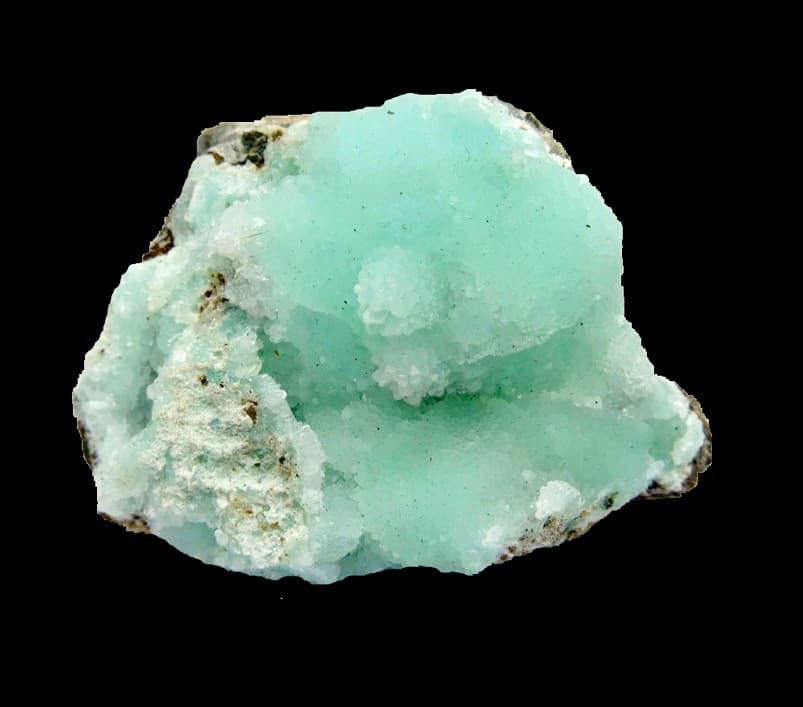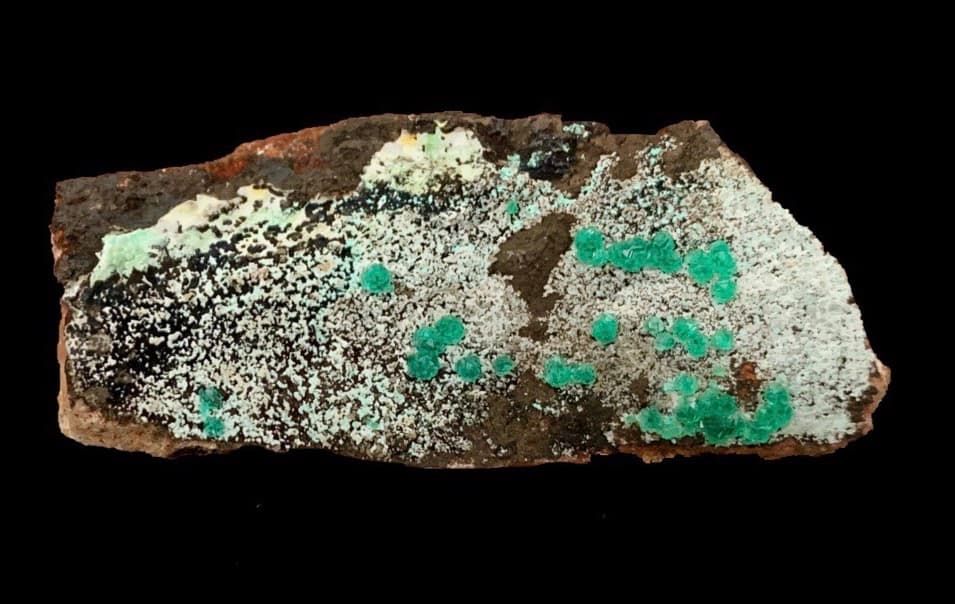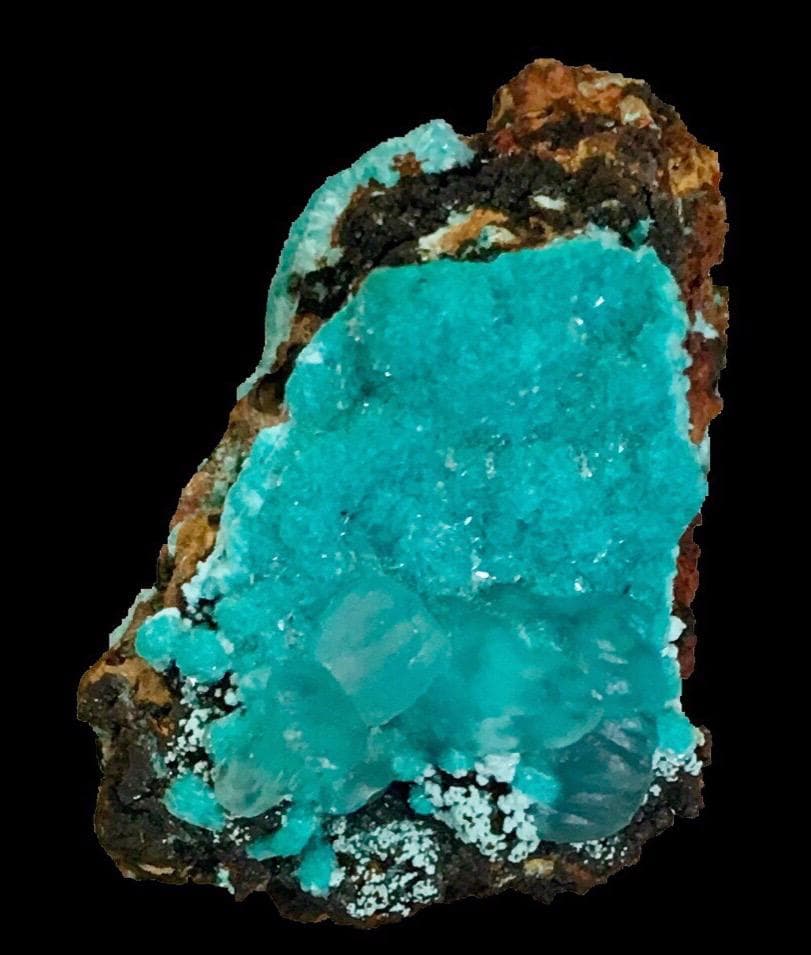Smithsonite
Smithsonite is a zinc carbonate mineral. Specimens of the mineral most commonly occur in botryoidal form. Smithsonite is often found in weathered zinc ore deposits and commonly associated with hemimorphite, aurichalcite, malachite, azurite, and cerussite.
Uses
Historically, Smithsonite was a chief source of the element Zinc, before development in mining techniques lead Sphalerite to replace Smithsonite's role in Zinc extraction.Currently, Smithsonite is primarily valued as a collectible mineral.
Notable Localities
Smithsonite has been found in many Copper and Zinc related localities. Sizable singular crystals of Smithsonite have been found at the famous Tsumeb Mine of Namibia.In europe, blue and green masses of Smithsonite have been known to occur in the Lavrion District of Greece, as well as the Sardinia region of Italy.The Refugio Mine of Choix, Sinaloa and San Antonio Mine of Chihuahua in Mexico produce fine pink and blue botryoidal specimens.The most famous Smithsonite locality is the Kelly Mine of Magdalena, New Mexico. Thousands of turquiouse botryoidal masses have been mined at the locality. The 79 Mine near Hayden, Arizona also produces green Smithsonite.
| Properties | |
|---|---|
| Chemical Formula | ZnCO3 |
| Hardness | 4.5-4.5 |
| Crystal System | Trigonal |
| Mineral Class | Carbonates |
| Luster | Vitreous |


